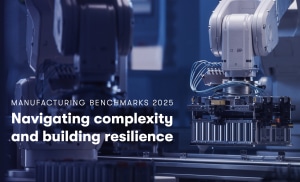The Avery Dennison emissions reduction targets have been approved by the Science Based Targets initiative (SBTi) as consistent with levels required to meet the goals of the Paris Agreement.
The targets covering greenhouse gas emissions from the company’s operations (scopes 1 and 2) are in line with reductions required to keep warming to no more than 1.5°C – the most ambitious goal of the Paris Agreement and what the latest climate science has told us is needed to prevent the most damaging effects of climate change.
Meanwhile, the company’s target for the emissions from its value chain (scope 3) meets the SBTi’s criteria for ambitious value chain goals, meaning it too is aligned with current best practice.
Avery Dennison is furthering its efforts by setting ambitious 2030 targets. This saw the company commit to reducing absolute scope 1 and 2 GHG emissions by 70 per cent from a 2015 baseline year, and also committing to reduce absolute scope 3 GHG emissions from purchased goods and services and end of life treatment of sold products by 30 per cent by 2030 from a 2018 base year.
The specific 2030 targets fall under three broad sustainability goals: deliver innovations that advance the circular economy; reduce the environmental impact in its operations and supply chain; and make a positive social impact by improving the livelihoods of people and communities.
The company’s overall ambition is to have net-zero emissions by 2050. The 2030 goals also include targets for gender diversity, employee engagement and inclusion, safety, and more.
“Setting sustainability goals needs a benchmark by which we all ensure everyone is working together towards a collective goal,” said Michael Colarossi, VP, product line management, innovation and sustainability, RBIS, Avery Dennison and lead for ESG initiatives for the company.
“This acknowledgment by the SBTi gives us confidence that we are setting ambitious scopes 1, 2 and 3 GHG emissions reduction targets, as we join with other global industry leaders to move the needle towards a future of net-zero emissions.”






